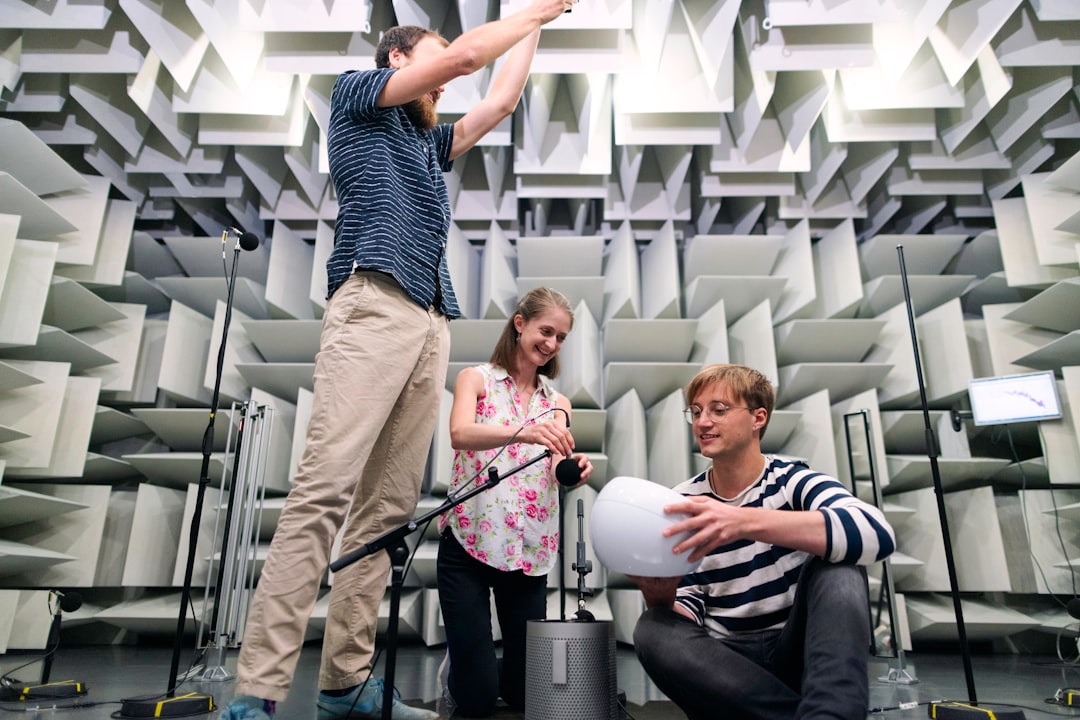Unlock encrypted content
Please enter your SSCE key to initiate on-the-fly decryption.
Decryption key: (Click cancel if you don't have the key)
Copied link to clipboard.
This feature is unavailable for free accounts. Upgrade now and enjoy all Premium benefits.
Go Premium!
This feature is unavailable for free accounts. Upgrade now and enjoy all Premium benefits.
Go Premium!
Please open this page in browser ( Google Chrome or Safari ) to use this feature.
Open In Browser
Cloud Computing and Edge Computing: Revolutionizing the Digital Landscape
Random related video for this blog.
Copied share link to clipboard.
With the rise of the internet and the increasing demand for remote access, these technologies have become essential for individuals and businesses alike. In this article, we will explore the benefits of cloud computing and edge computing, along with their practical applications and real-world examples.
Cloud Computing: Empowering Businesses with Scalable Storage Solutions
Cloud computing has revolutionized the way businesses store and manage their data. By leveraging remote servers and networks, cloud computing allows users to access their files and applications from anywhere in the world. This flexibility has made it an indispensable tool for businesses of all sizes. One of the key advantages of cloud computing is its scalability. Unlike traditional on-premises servers, cloud storage solutions offer virtually unlimited storage capacity. This means that businesses can easily scale their storage needs as their data grows, without the need for expensive hardware upgrades. Additionally, cloud computing enables seamless collaboration between team members, as files can be easily shared and accessed by multiple users simultaneously. A practical example of cloud computing in action is the use of cloud-based file hosting services. These platforms, such as FileLu, provide users with a secure and convenient way to store and share their files. With features like automatic camera uploads and large file transfer capabilities, users can easily back up their photos and videos, and share them with others. This is particularly useful for photographers, videographers, and content creators who deal with large file sizes on a regular basis.Edge Computing: Bringing Intelligence to the Edge of the Network
While cloud computing offers numerous benefits, it does have its limitations. One of the main challenges is latency, or the delay in data transfer between the user and the remote server. This becomes especially problematic for applications that require real-time processing, such as autonomous vehicles orsmart home devices. This is where edge computing comes into play. Edge computing brings the processing power closer to the source of the data, reducing the latency and enabling faster response times. By placing servers and data centers at the edge of the network, edge computing allows for real-time data analysis and decision-making. A prime example of edge computing in action is the implementation of smart homes. Smart home devices, such as thermostats, security systems, and voice assistants, rely on real-time data processing to provide personalized experiences and enhance user convenience. By leveraging edge computing, these devices can make instant decisions based on sensor data, without the need to send the information to a remote server and wait for a response.
Compliance-Ready Storage Solutions: Ensuring Data Security and Privacy
In today's digital landscape, data security and privacy are of utmost importance. With the increasing number of data breaches and cyber threats, businesses and individuals need storage solutions that comply with the highest security standards. Cloud hosting providers, like FileLu, offer compliance-ready storage solutions that prioritize data security and privacy. These solutions often include features like end-to-end encryption, which ensures that data remains protected throughout its entire lifecycle. Additionally, compliance-ready storage solutions adhere to industry-specific regulations, such as HIPAA for healthcare or GDPR for data protection in the European Union. By choosing compliance-ready storage solutions, businesses can rest assured that their data is protected from unauthorized access and cyber attacks. This is particularly crucial for industries that deal with sensitive information, such as healthcare, finance, and legal services.Cryonics: The Future of Data Storage
Looking towards the future, cryonics is an emerging technology that has the potential to revolutionize data storage. Cryonics involves freezing and preserving biological tissues or even entire bodies at extremely low temperatures, with the goal of reviving them in the future. While cryonics is primarily associated with the preservation of human bodies for potential future revival, the concept can also be applied to data storage. Researchers are exploring the possibility of cryogenically freezing data to preserve it for long periods, potentially even centuries. This could be a viable solution for storing large amounts of data that needs to be preserved for future generations. Although cryonics is still in its early stages, it holds promise for the future of data storage. By leveraging this technology, we may be able to store vast amounts of information for extended periods, ensuring its preservation and accessibility for generations to come.Conclusion
Cloud computing and edge computing have revolutionized the way we store and access data. With their scalability, real-time processing capabilities, and compliance-ready storage solutions, these technologies have become essential tools for businesses and individuals alike. Whether it's storing and sharing files in the cloud or making instant decisions at the edge of the network, these technologies empower us to embrace a more connected and efficient digital future.Frequently Asked Questions (FAQs)
Question: What is the difference between cloud computing and edge computing? Answer:
Cloud computing involves storing and accessing data on remote servers, while edge computing brings the processing power closer to the source of the data, reducing latency and enabling real-time decision-making.
Question: How can cloud computing benefit businesses? Answer:
Cloud computing offers businesses scalability, cost-effectiveness, and seamless collaboration, allowing them to easily store and access their data from anywhere in the world.
Question: Are compliance-ready storage solutions important? Answer:
Yes, compliance-ready storage solutions are crucial for businesses that deal with sensitive information. These solutions prioritize data security and privacy, ensuring compliance with industry-specific regulations.
Question: What is cryonics? Answer:
Cryonics is the practice of freezing and preserving biological tissues or bodies at extremely low temperatures with the goal of reviving them in the future. It holds potential for the future of data storage as well.
Case Studies 1. Company X: Leveraging Cloud Computing for Seamless Collaboration Company X, a global marketing agency, faced challenges in collaborating with its remote teams and clients. By adopting a cloud computing solution, they were able to store and share files securely, enabling seamless collaboration and real-time updates. This resulted in increased productivity and improved client satisfaction. 2. Smart Home Automation: Enhancing User Experience with Edge Computing A homeowner implemented a smart home automation system that leveraged edge computing. With sensors placed throughout the house and localized data processing, the system was able to adjust temperature, lighting, and security settings in real-time, providing a personalized and convenient experience for the homeowner. 3. Healthcare Provider: Ensuring Data Security with Compliance-Ready Storage A healthcare provider needed a storage solution that complied with HIPAA regulations to protect patient data. By choosing a compliance-ready storage solution, they were able to securely store and access patient records, ensuring data security and privacy while adhering to industry regulations.
By Amelia Isabella
Email: [email protected]
Related
Data Transfer via SSL: Secure Document Collaboration, Bioprinting, and Immersive...
June 23, 2023
Read More
File Sharing Capabilities: Exploring the Power of Machine Learning Algorithms...
June 23, 2023
Read More
Cybernetics: Exploring the Future of Human-Machine Interface and Technological Advancements.
June 23, 2023
Read More
Seamless File Integration with Third-Party Apps: Enhancing Efficiency and Collaboration...
June 23, 2023
Read More
Reputable Project Management Software: Boosting Efficiency and Collaboration
June 23, 2023
Read More
Popular
Exploring the Intersection of Technology: From Cybersecurity to Augmented Reality...
November 16, 2025
Read More
The Future of Technology: Exploring Biohacking, Space Tourism, and Digital...
November 23, 2025
Read More
The Future of File Sharing: Streamlined Workflows for Photographers and...
November 19, 2025
Read More
Exploring the Benefits of Cloud Storage and Innovative Technologies in...
November 26, 2025
Read More
The Future of Digital Transformation: Exploring Smart Homes, Efficient File...
November 30, 2025
Read More
Latest
The Future of Digital Transformation: Exploring Smart Homes, Efficient File...
November 30, 2025
Read More
Exploring the Benefits of Cloud Storage and Innovative Technologies in...
November 26, 2025
Read More
The Future of Technology: Exploring Biohacking, Space Tourism, and Digital...
November 23, 2025
Read More
The Future of File Sharing: Streamlined Workflows for Photographers and...
November 19, 2025
Read More
Exploring the Intersection of Technology: From Cybersecurity to Augmented Reality...
November 16, 2025
Read More
The Future of File Management: Embracing Edge Computing and Efficient...
November 12, 2025
Read More
The Future of File Sharing: Exploring User-Friendly Solutions and Data...
November 5, 2025
Read More
The Future of Cloud Storage: How FileLu Empowers Creative Professionals...
November 2, 2025
Read More
The Future of Autonomous Technologies: Innovations in Robotics, File Sharing,...
October 29, 2025
Read More
Emerging Technologies Revolutionizing File Management: From Li-Fi to Robust Collaboration...
October 26, 2025
Read More
Emerging Technologies: Exploring the Impact of File Access Auditing, Genetic...
October 19, 2025
Read More
The Future of Data Storage: Exploring Advanced Encryption, Mobile Integration,...
October 5, 2025
Read More
Exploring the Future of Data Management: Security, Efficiency, and Cognitive...
September 28, 2025
Read More
Revolutionizing Data Management: Innovations in Storage, Security, and Sustainable Technology.
September 24, 2025
Read More





















